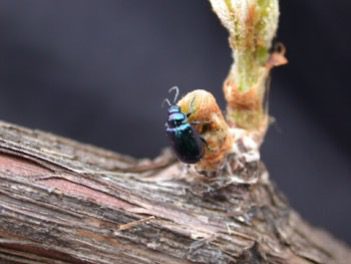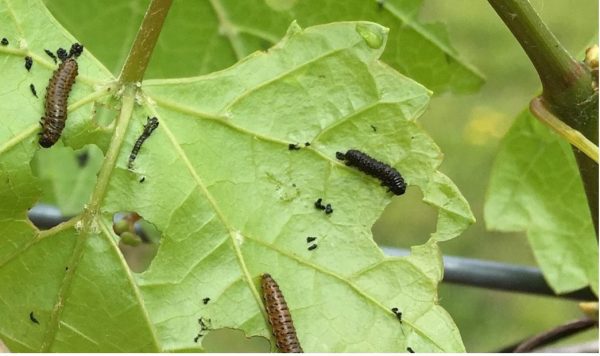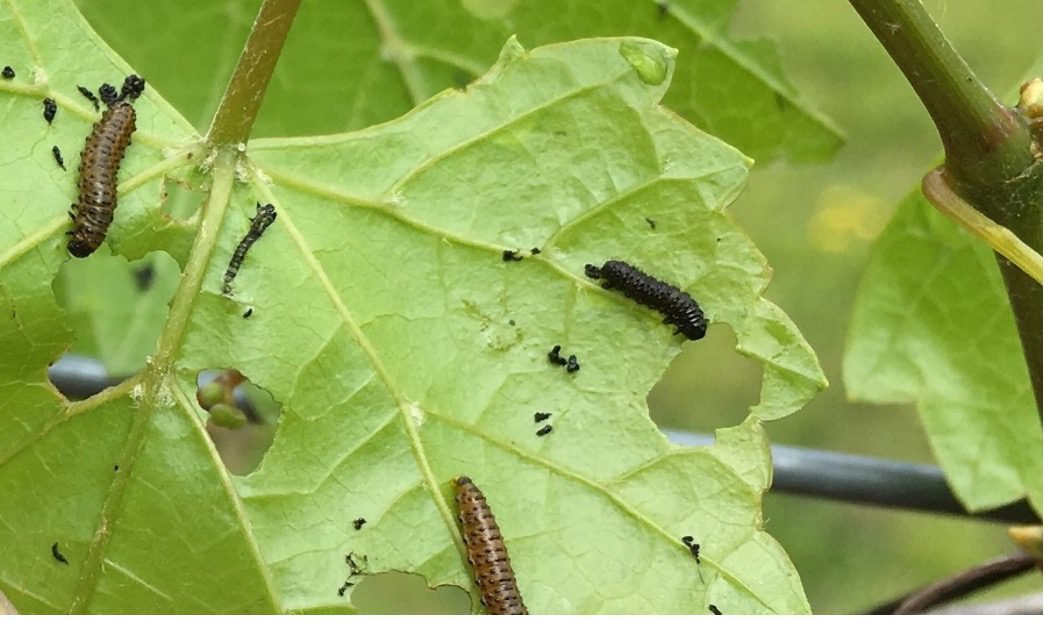Crop Production

Grape flea beetle is often the first insect pest in the season to begin attacking grapes. This shiny, metallic dark blue beetle is found in the eastern two-thirds of the United States. Adults damage the swelling buds by hollowing them out. Damaged buds will not develop into primary canes which can reduce grape yields. This severe injury to the developing buds can cause economic losses in some years. The level of injury is worse when cool temperatures slow bud development. Once the buds are 1/2 inch long, only slight injury is caused.

Figure 1. Grape flea beetle. Photo by Eric Burkness, University of Minnesota.
Flea Beetle Description
Adult is a small metallic dark blue beetle that is about 5 mm long (Figure 1). Adults overwinter in debris in and near the vineyard. They become active early in the spring and lay eggs in cracks in the vine bark, at bases of buds, between bud scales, and on leaves. Larvae are brownish and marked with black spots (Figure 2). Eggs are light yellow and are laid in masses; they hatch in a few days and larvae feed on grape leaves for 3-4 weeks.
Damage Caused by Flea Beetles
Larval feeding damage consists of characteristic chain-like feeding marks on leaves (Figure 2). While the larvae do injure the leaves, they are rarely of economic importance.
However, the damage by adult grape flea beetles is more important. The beetles eat holes into the sides of buds and gouge out the contents as the buds swell. It should be noted that climbing cutworms can cause similar damage. Once larvae are mature they drop to the ground and pupate in an earthen chamber. Adults emerge one to two weeks later, in July and August. These adults feed for the rest of the summer but cause little damage. Adults overwinter in protected areas around vineyards, and start feeding on interior of primary buds and opening grape leaves in early spring. There is only one generation per year.
Host Plants
In addition to wild and cultivated grape varieties, Virginia creeper is also a host for the grape flea beetles.
Damage is often restricted to vineyard borders, particularly near wooded areas. When grape flea beetle is a problem, it occurs early in the season, just when the buds begin to swell. When flea beetles are common and injury to the small buds is observed, a spray timed at bud swell will provide control.
Please refer to the 2022 Southeast Regional Muscadine Grape IPM Guide for management options.

Figure 2. Grape flea beetle larvae and leaf damage.

